
| Самолеты (сортировка по:) | |||||
| Страна | Конструктор | Название | Год | Фото | Текст |
Caproni Ca.8 - Ca.13 (Cm.1 - Cm.7)

|
Страна: Италия Год: 1911
|
| Caproni - Ca.3 - Ca.6 - 1911 - Италия | <– | –> | Caproni - Ca.14 - Ca.16 (Cm.9 - Cm.12) - 1912 - Италия |
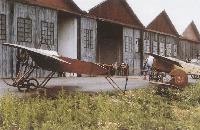 |
R.Abate, G.Alegi, G.Apostolo - Aeroplani Caproni: Gianni Caproni and His Aircraft, 1910-1983 |
| After a forced hiatus, the Caproni Museum gathered new momentum in the Sixties with the opening of a new display in some of the old Vizzola Ticino hangars. Some of the best preserved aircraft were reassembled here and partially restored, while others remained in storage in Venegono Superiore. The photo shows an outdoor line-up for the 1973 World Aviation Museums Conference. |
 |
R.Abate, G.Alegi, G.Apostolo - Aeroplani Caproni: Gianni Caproni and His Aircraft, 1910-1983 |
| Louis Bleriot’s successful Channel crossing of July 25, 1909 increased confidence in monoplanes. Like other builders worldwide, impressed by the monoplane’s great structural simplicity and corresponding decrease in drag compared to biplanes, Caproni also turned his attention to these machines: from 1911 to 1913 his design activity was devoted exclusively to training monoplanes, in both single and two seat variants. The first of these, a single seater powered by a 25 hp three cylinder fan-type Anzani, was flown on June 13, 1911 at Vizzola. Originally known simply as “25 hp Caproni monoplane”, shortened to Cm 1 in some internal documents, it became known as Ca.8 in the final Caproni designation system settled in the late Twenties. |
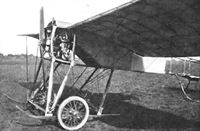 |
J.Davilla - Italian Aviation in the First World War. Vol.2: Aircraft A-H /Centennial Perspective/ (74) |
| Caproni Ca.8 |
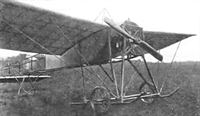 |
J.Davilla - Italian Aviation in the First World War. Vol.2: Aircraft A-H /Centennial Perspective/ (74) |
| Caproni Ca.8 |
 |
R.Abate, G.Alegi, G.Apostolo - Aeroplani Caproni: Gianni Caproni and His Aircraft, 1910-1983 |
| A familiar event on every early flying field. The pilot of this Ca.8 appears to have escaped the situation with little more than a few scratches and a big fright. The aircraft’s damage also appears quite limited. |
 |
J.Davilla - Italian Aviation in the First World War. Vol.2: Aircraft A-H /Centennial Perspective/ (74) |
| Caproni Ca.9 |
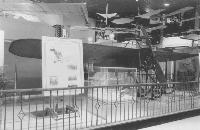 |
R.Abate, G.Alegi, G.Apostolo - Aeroplani Caproni: Gianni Caproni and His Aircraft, 1910-1983 |
| Interest in Gianni Caproni and his aircraft has always remained high, in Italy and abroad. To commemorate the 100th anniversary of Caproni’s birth, in 1986 the Smithsonian’s renowned National Air and Space Museum exhibited in its Early Flight gallery the Caproni Museum’s Ca.9, together with models, drawings, memorabilia, trophies won by Caproni aircraft and several text panels. Returned to Italy in 1988, the Ca.9 is now on display in Trento. |
 |
R.Abate, G.Alegi, G.Apostolo - Aeroplani Caproni: Gianni Caproni and His Aircraft, 1910-1983 |
| On February 12 and 14, 1912, flying a Ca.11 (originally known as Cm 5) powered by a seven cylinder 50 hp Gnome Omega rotary, pilot Enrico Cobioni established Italian records for speed over a 5 km closed circuit (3min 17sec at 91.370 kph), over a 10 km circuit (66min 30sec at 90.225 kph), and over a straight line (106.242 kph). Between 1911 and 1913 a total of 71 monoplanes of various types were built. This figure, by no means inconsiderable at the time, can be broken down into 16 prototypes and 55 production machines. |
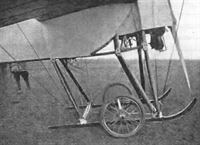 |
J.Davilla - Italian Aviation in the First World War. Vol.2: Aircraft A-H /Centennial Perspective/ (74) |
| Caproni Ca.11 |
 |
J.Davilla - Italian Aviation in the First World War. Vol.2: Aircraft A-H /Centennial Perspective/ (74) |
| Caproni Ca.11 |
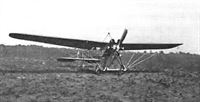 |
J.Davilla - Italian Aviation in the First World War. Vol.2: Aircraft A-H /Centennial Perspective/ (74) |
| Caproni Ca.12 |
 |
R.Abate, G.Alegi, G.Apostolo - Aeroplani Caproni: Gianni Caproni and His Aircraft, 1910-1983 |
| March 20, 1912 was a full day for Enrico Cobioni and the Ca.12. In the morning colonnello Vittorio Cordero di Montezemolo, commanding officer of the army’s first aviation unit, was given a half hour flight, climbing to 600 meters in just nine minutes. In the afternoon, pilot and aircraft established world speed records over 250, 300 and 330 km distances. The total distance, itself a record for a three hour flight, was covered with remarkable regularity: the first 100 km were flown in 56min, the next in 57 and the last ones in 56, for an overall average speed of 106.5 kph. The test was interrupted at dusk, despite the fact that the machine had far from exhausted its possibilities: its tanks still held about 48% of the fuel load and 31% of the oil. The flight was monitored by ingegner Vogel of the Societa Italiana Aviazione and, as adjunct commissioners, tenenti Del Giudice and Garino. |
 |
R.Abate, G.Alegi, G.Apostolo - Aeroplani Caproni: Gianni Caproni and His Aircraft, 1910-1983 |
 |
R.Abate, G.Alegi, G.Apostolo - Aeroplani Caproni: Gianni Caproni and His Aircraft, 1910-1983 |
| On April 16, 1912 Cobioni, flying a Ca.12 with a 60 hp Anzani engine, performed a non stop Vizzola-Adria flight. To overcome a thick fog Cobioni closely followed the course of the Po river, using it as navigational reference. The flight, monitored by officials in places of departure and arrival, covered 449 km in four hours averaging over 112 kph. It was the longest non stop flight carried out in Italy until then. Cobioni could not refill his aircraft in Adria because ... there was no fuel in town, forcing him to dismantle the airplane and send it to Venice by rail. The photo show the Ca.12’s fuselage shortly after being unloaded at the Lido. |
 |
R.Abate, G.Alegi, G.Apostolo - Aeroplani Caproni: Gianni Caproni and His Aircraft, 1910-1983 |
| Enrico Cobioni made numerous flights in Venice, the first of which on April 22: taking off from the Lido at about 7 pm, Cobioni made a fast low level passage over the Lido beach. On a second flight the pilot climbed to 700 meters before cutting the engine and gliding down to about 50 meters from the campanile of St. Mark in Piazza San Marco before restarting the engine and returning to the Lido amidst the general surprise of the crowd. Several propaganda flights were made in the following days, including one with Caproni, who had by then joined Cobioni in Venice. The final flight was made on April 26, the editor of the daily L’Adriatico and the nephew of commendator Weil being carried as passengers. Young Weil became the first paying passenger in Italian aviation. |
 |
R.Abate, G.Alegi, G.Apostolo - Aeroplani Caproni: Gianni Caproni and His Aircraft, 1910-1983 |
| Caproni and Cobioni on board the two seater. |
 |
R.Abate, G.Alegi, G.Apostolo - Aeroplani Caproni: Gianni Caproni and His Aircraft, 1910-1983 |
| Among the many who earned their wings at Vizzola Ticino on Caproni airplanes are several pioneers of Italian aviation who deserve to be singled out, including Clemente Maggiora and count Augusto Palma di Cesnola (graduated in 1911), marquis Pier Carlo Bergonzi who later went on to become an interesting aircraft designer (1912), and the first woman to earn an official licence, Rosina Ferrario, graduated in 1913 and seen here sitting in a Ca.12. |
 |
R.Abate, G.Alegi, G.Apostolo - Aeroplani Caproni: Gianni Caproni and His Aircraft, 1910-1983 |
| The photo shows the tandem cockpits of the Ca.12 (or Cm 6), powered by a six cylinder, double star, air cooled 60 hp Anzani 6A3 radial. Between March and June 1912 this aircraft established several Italian records for speed and endurance over a closed circuit. |
 |
R.Abate, G.Alegi, G.Apostolo - Aeroplani Caproni: Gianni Caproni and His Aircraft, 1910-1983 |
| The Ca.13, originally known as Cm 7, was directly descended from the previous Ca.12 which had performed so many memorable flights. A Ca.13 christened “Milano” was donated to the Milan chapter of the Societa Italiana di Aviazione to be presented to the Italian Army. The official handing over ceremony was held at Vizzola Ticino in the afternoon of July 12, 1912 at the presence of civil and military authorities and of a large crowd. |
 |
R.Abate, G.Alegi, G.Apostolo - Aeroplani Caproni: Gianni Caproni and His Aircraft, 1910-1983 |
| After displaying his personal ability and the Ca.13’s flying qualities to the large crowd of spectators, Enrico Cobioni prepares to land. |
 |
R.Abate, G.Alegi, G.Apostolo - Aeroplani Caproni: Gianni Caproni and His Aircraft, 1910-1983 |
| One of the moments of the ceremony of July 12, 1912 during which the Ca.13 “Milano” was delivered to the SIA. Among the many other airplanes which took part in the event were a Caproni flown by capitano Carlo Piazza, veteran of the recently concluded Libyan campaign, and a Nieuport flown by tenente Attilio Calderara, the younger brother of the first licensed Italian pilot Mario Calderara. |
 |
R.Abate, G.Alegi, G.Apostolo - Aeroplani Caproni: Gianni Caproni and His Aircraft, 1910-1983 |
| One of the moments of the ceremony of July 12, 1912 during which the Ca.13 “Milano” was delivered to the SIA. Among the high ranking Army officers in attendance were tenente generate Di Majo, commanding the Milan Army Corps, and maggior generate Pirozzi, commanding the Milan division, respectively second and third from left in the photo. |
 |
R.Abate, G.Alegi, G.Apostolo - Aeroplani Caproni: Gianni Caproni and His Aircraft, 1910-1983 |
| One of the moments of the ceremony of July 12, 1912 during which the Ca.13 “Milano” was delivered to the SIA. The aircraft's godmother, marchesa Diana Crespi, christened the aircraft by breaking the traditional bottle of champagne and was later taken up for a flight by Cobioni. |
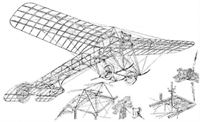 |
J.Davilla - Italian Aviation in the First World War. Vol.2: Aircraft A-H /Centennial Perspective/ (74) |
| Caproni Ca.8 drawing. |